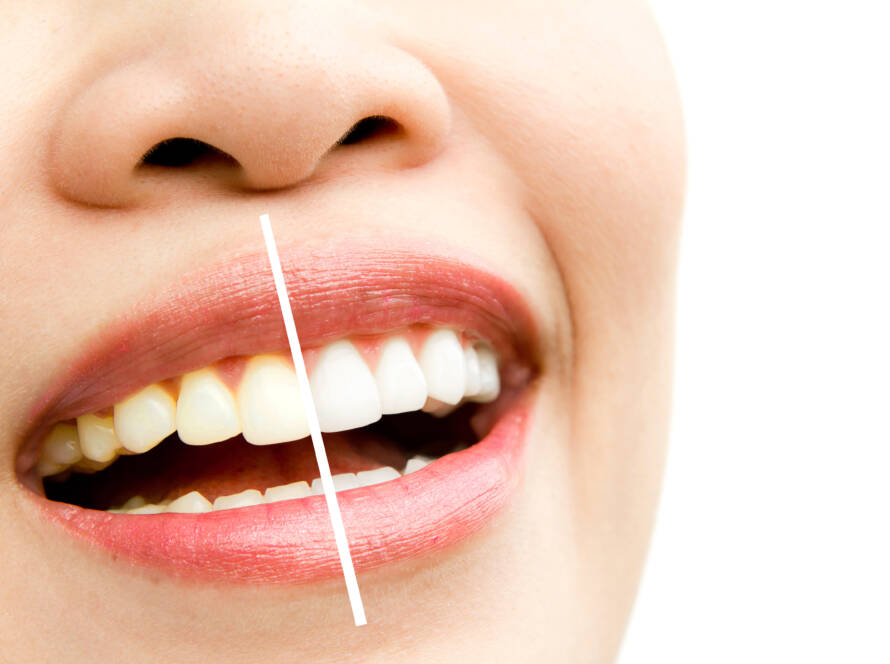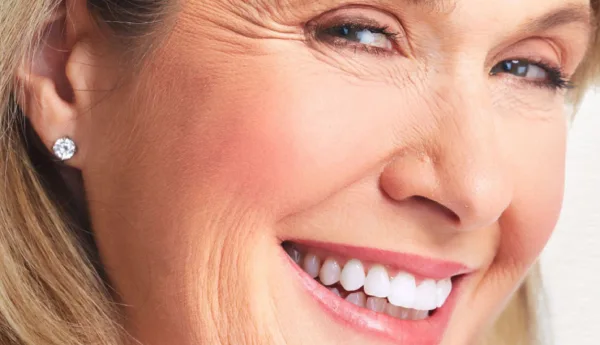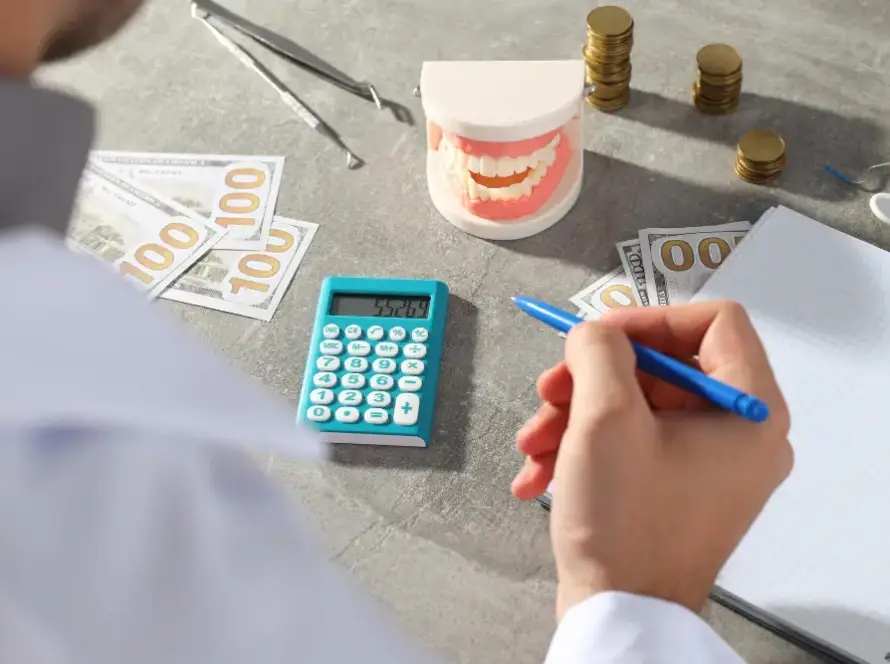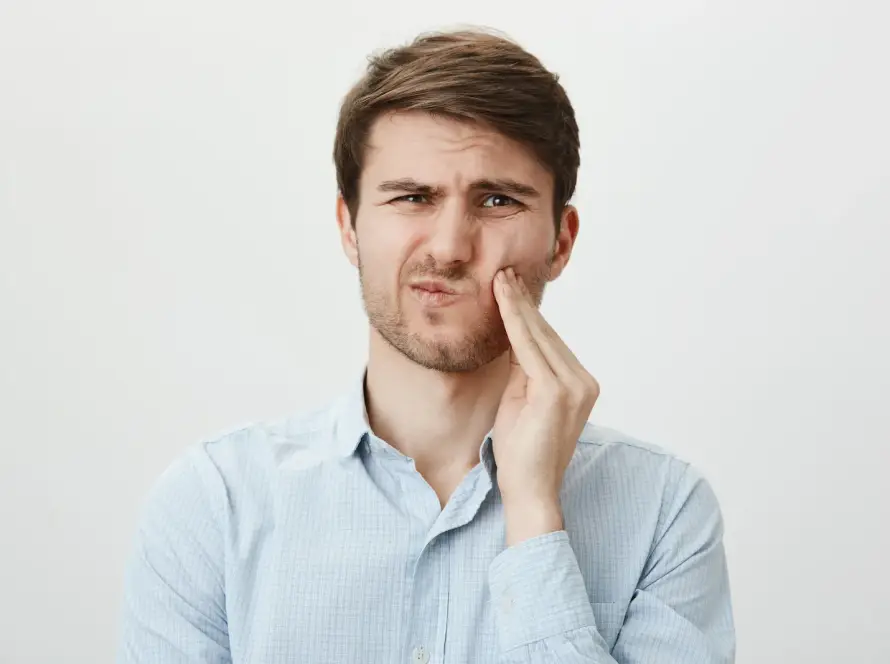Yellow teeth can result from various intrinsic and extrinsic factors. This section explores the primary causes contributing to discolored teeth, fostering a comprehensive understanding of the issue.
Intrinsic Factors:
- Aging: As individuals age, the enamel thins, exposing the yellowish dentin beneath.
- Genetics: Genetic factors significantly affect tooth color, thickness of enamel, and overall dental susceptibility to discoloration.
- Medications: Certain medications, such as tetracycline antibiotics, antihistamines, and high blood pressure drugs, can lead to intrinsic staining.
Extrinsic Factors:
- Diet: Regular consumption of foods and beverages like coffee, tea, wine, berries, and curry can stain teeth over time.
- Tobacco Use: Smoking or chewing tobacco introduces tar and nicotine, which are notorious for causing yellow stains.
- Poor Oral Hygiene: Inadequate brushing, flossing, and irregular dental checkups contribute to plaque buildup and subsequent discoloration.
- Environment: Exposure to excessive fluoride during tooth development can result in fluorosis, characterized by yellow or brown discolorations.
Additional Considerations:
- Dental Trauma: Injuries to teeth can disrupt enamel formation in children or cause discoloration in adults.
- Health Conditions: Certain diseases affecting enamel and dentin can lead to discoloration. These conditions might also influence treatments and preventions.
- Previous Dental Work: Materials used in dental restorations, such as amalgam fillings, can cast a greyish or yellowish tint on surrounding teeth.
Understanding these factors is crucial for assessing and implementing effective whitening strategies. Reducing exposure to causative elements and maintaining diligent oral hygiene can mitigate the yellowing process.
Daily Oral Hygiene: The Foundation for Whiter Teeth
Establishing a comprehensive daily oral hygiene routine is essential for maintaining not only oral health but also achieving whiter teeth. This involves several key practices that should be diligently adhered to:
- Brushing: Brushing teeth at least twice a day, preferably in the morning and before bed, is crucial. Using a toothpaste with fluoride and whitening agents can help remove surface stains. The correct brushing technique involves holding the toothbrush at a 45-degree angle to the gums and using gentle, circular motions. Electric toothbrushes have been shown to be more effective in removing plaque and surface stains compared to manual brushing.
- Flossing: Flossing daily removes plaque and food particles from between the teeth and under the gum line where a toothbrush can’t reach. This prevents the buildup of plaque, which can lead to discoloration and gum disease. Proper technique includes using a fresh section of floss for each tooth and curving the floss around each tooth in a C-shape.
- Mouthwash: Using an antibacterial mouthwash once or twice a day can help reduce plaque and gingivitis. Opt for a mouthwash that contains hydrogen peroxide for an added whitening effect. Swishing the mouthwash around the mouth for the recommended time on the label ensures its effectiveness.
- Tongue Cleaning: Bacteria and food particles can accumulate on the tongue, leading to bad breath and plaque formation. Using a tongue scraper or the back of a toothbrush to clean the tongue can help maintain overall oral hygiene.
- Dietary Considerations: Limiting the intake of foods and beverages that stain teeth, such as coffee, tea, red wine, and berries, can help maintain whiteness. Rinsing the mouth with water or brushing shortly after consuming these can reduce staining. Additionally, a diet rich in fruits and vegetables like apples, carrots, and celery can naturally help clean teeth and promote saliva production, which aids in maintaining an oral environment that resists staining.
- Regular Dental Check-ups: Visiting the dentist for regular cleanings and check-ups ensures professional removal of plaque and tartar that can’t be eliminated by regular brushing and flossing. These visits also provide an opportunity to discuss professional whitening treatments or other options if daily hygiene practices are insufficient for achieving desired results. Dental professionals can offer personalized advice based on individual oral health needs.
By consistently applying these daily oral hygiene practices, individuals can effectively combat yellowing teeth, thereby promoting a brighter, whiter smile.
Professional Teeth Cleaning and Whitening Treatments
Professional teeth cleaning and whitening treatments are highly effective methods to address yellow teeth. Most dental professionals recommend these treatments for individuals looking to achieve a noticeably brighter smile.
Professional teeth cleaning, commonly referred to as prophylaxis, entails:
- Scaling and Polishing: This process removes plaque, tartar, and superficial stains from the teeth surfaces.
- Fluoride Treatment: Fluoride is often applied post-cleaning to strengthen the enamel and reduce the risk of cavities.
Professional whitening treatments, also known as in-office bleaching, provide immediate and long-lasting results. These treatments include:
- Laser Teeth Whitening: This method involves the application of a bleaching agent activated by a laser. The laser’s energy enhances the effectiveness of the oxidizing agent, leading to a whiter smile.
- Zoom Whitening: This proprietary procedure uses a special light to accelerate the whitening gel, resulting in several shades of whitening in a short period.
- Custom-Fit Whitening Trays: Dentists create trays customized to the patient’s teeth, ensuring even application of the whitening agent. Patients can use these trays at home, enhancing comfort and convenience.
Professional whitening treatments use powerful agents such as hydrogen peroxide or carbamide peroxide. These agents penetrate the enamel to break down stains, providing significant whitening effects.
In addition to the common procedures, some dental clinics offer alternative treatments, including:
- Micro-abrasion: This technique removes a minimal amount of enamel to eliminate surface stains.
- Enamel Bonding and Veneers: These options are ideal for individuals with intrinsic stains or severely discolored teeth that do not respond to traditional whitening methods. Veneers are thin, custom-made shells that cover the front surface of the teeth, providing an instantly brighter appearance.
It is crucial to consult with a dental professional to determine the most appropriate treatment based on individual needs and dental health status. Ensuring these treatments are conducted under professional supervision minimizes risks and maximizes benefits.
Over The Counter Whitening Products: Gels, Strips, and Toothpaste
When it comes to brightening a smile, over-the-counter (OTC) whitening products offer a convenient and cost-effective solution. These products are easily accessible and come in various formulations such as gels, strips, and toothpaste.
Whitening Gels
Whitening gels typically contain peroxide-based compounds that break down stains on tooth enamel. They are applied using brush-on systems or trays, which hold the gel in contact with the teeth for a specified period. Instructions may vary, but common usage involves:
- Applying a thin layer on the teeth.
- Keeping it on for 15-20 minutes.
- Repeating the process once or twice daily for up to 14 days.
Whitening Strips
Whitening strips have gained popularity due to their ease of use and effectiveness. These thin, flexible strips are coated with a peroxide-based whitening gel. Users can adhere them directly to their teeth, ensuring even coverage. The process generally includes:
- Applying the strips for 30 minutes, twice a day.
- Using them consistently for 10-20 days. Noteworthy brands may provide more specific instructions based on their unique formulations.
Whitening Toothpaste
Whitening toothpaste often serves as a supplementary approach to other whitening treatments. These toothpastes typically contain mild abrasives and chemicals designed to remove surface stains. While they may not change the natural color of teeth, they can:
- Remove daily stains caused by beverages like coffee and tea.
- Prevent new stains from forming. It’s important to note that prolonged use might lead to enamel erosion, so selecting a brand with the American Dental Association (ADA) seal of approval is recommended.
Considerations
Before choosing an OTC whitening product, consulting with a dental professional is advisable. Some individuals might have underlying dental conditions that could be exacerbated by these products. Additionally, those with sensitive teeth should opt for formulations specifically designed to minimize discomfort.
Investing time in research and understanding each product’s instructions can lead to optimal results and a brighter smile. Adhering to usage guidelines is crucial for both efficacy and safety in achieving whiter teeth.
Dietary Changes: Foods and Drinks to Avoid for Whiter Teeth
Whiter teeth require careful consideration of what to consume regularly, as some foods and drinks contribute significantly to staining and discoloration. Below is a list of substances to avoid for a brighter smile.
Foods to Avoid
- Berries
- Blueberries, blackberries, and raspberries: These dark-colored berries are known to cause staining. While nutritious, their pigmentation can easily attach to the enamel.
- Tomato-Based Sauces
- Spaghetti sauce, ketchup, and salsas: These acidic and deeply colored sauces can erode enamel, making teeth more susceptible to discoloration.
- Curries
- Indian and Thai dishes: Their vibrant colors can cling to teeth, leading to gradual yellowing.
- Soy Sauce and Balsamic Vinegar
- Common condiments: Their dark hues and acidic nature make them potential culprits for staining.
- Sweets
- Candies, chocolates, and sticky treats: These not only contribute to tooth decay but can also lead to discoloration, especially those with bright artificial coloring.
Drinks to Avoid
- Coffee
- The tannins in coffee are notorious for causing yellowing over time. Frequent consumption quickly dulls the whiteness of teeth.
- Tea
- Particularly black and green teas, which contain tannins and can stain teeth even more aggressively than coffee.
- Red Wine
- The deep coloration and acidity of red wine easily stain teeth, with its tannins acting as a significant offender.
- Colas and Dark Sodas
- Their dark pigments, sugar content, and acidity can cause erosion and discoloration.
- Energy Drinks
- These typically acidic beverages can erode enamel, making teeth more prone to staining.
Other Factors to Consider
- Citrus Fruits and Juices
- Lemons, oranges, and grapefruits: While healthy, their high acidity can wear away enamel, making teeth susceptible to staining from other substances.
- Beetroot
- Known for its strong pigmentation, beetroot can easily lead to noticeable stains if consumed frequently.
Helpful Tips
- Straw Use
- Drink potential staining beverages through a straw to minimize contact with teeth.
- Immediate Rinsing
- Rinse your mouth with water shortly after consuming any of the above items to reduce staining risk.
- Practice Moderation
- Limiting these foods and drinks can significantly decrease the likelihood of developing yellow teeth.
Maintaining whiter teeth is more manageable by being mindful of dietary choices and adopting a strategic approach to consumption and oral care habits.
The Role of Smoking and Tobacco Use in Teeth Discoloration
The influence of smoking and tobacco use on the color of teeth is significant and multifaceted. Both smoking and the use of other tobacco products are strongly associated with the development of yellow or brown stains on the teeth. The staining results from tar and nicotine present in tobacco, which can tarnish the enamel quickly.
Chemical Components and Their Effects
- Tar and Nicotine: These two components are largely responsible for discoloration. While tar is naturally dark, nicotine is colorless but turns yellow when it encounters oxygen.
- Consistent Exposure: Frequent and prolonged use of tobacco products accelerates the process of discoloration, leading to a buildup of stains over time.
Impact on Oral Hygiene
- Plaque and Tartar Formation: Tobacco use can increase plaque and tartar accumulation, creating environments conducive to further staining.
- Gum Disease and Inflammation: Smokers often suffer from gum diseases, which exacerbate the issues of plaque buildup and discoloration.
Secondary Effects
Aside from direct staining, smoking and tobacco use can lead to additional complications that impact the appearance of teeth:
- Dry Mouth: Smoking reduces saliva production, resulting in a dry mouth condition. Saliva naturally helps cleanse the mouth and teeth, and reduced production means less removal of food particles and bacteria, leading to staining.
- Bad Breath: The constant odor from tobacco settles into the mouth tissues, contributing to an overall lingering smell that can be difficult to mask.
Preventative Measures
To mitigate the discoloration caused by tobacco, several measures can be taken:
- Smoking Cessation: The most effective way to prevent further staining is to quit smoking and using tobacco products.
- Regular Dental Visits: Frequent cleanings by a dental professional can help manage staining and prevent it from worsening.
- Excellent Oral Hygiene: Consistent brushing and flossing can help reduce the plaque buildup that accompanies tobacco use, minimizing the discoloration.
Treatment Options
Once teeth have been discolored by tobacco, various treatments can be employed to restore their appearance:
- Professional Whitening: Dental practitioners can offer bleaching treatments that deeply penetrate to remove stubborn stains.
- Over-the-Counter Products: Whitening strips and toothpastes may provide some relief from discoloration, although typically less effective than professional options.
- Bonding or Veneers: For severe cases, dental procedures like bonding or veneers may be necessary to cover the stains and enhance the teeth’s aesthetic.
Conclusively, the detrimental effects of smoking and tobacco use on teeth go beyond external staining, negatively impacting oral health in multiple dimensions.
Regular Dental Check-Ups: Prevention and Maintenance
Regular dental check-ups are essential for effective prevention and maintenance of oral health. Professional dental care ensures early detection of issues that could contribute to yellow teeth and other dental problems.
Detection of Early Warning Signs
During regular visits, dentists can identify early signs of:
- Plaque Buildup: Plaque is a sticky film of bacteria that can result in yellow teeth.
- Tooth Decay: Early detection prevents cavities and maintains tooth enamel.
- Gum Disease: Gum disease can lead to discoloration and more severe dental issues.
Professional Cleaning
Regular dental cleanings remove plaque and tartar that daily brushing and flossing might miss. Professional cleaning involves:
- Scaling: Removes tartar above and below the gumline.
- Polishing: Smoothens the tooth surface, making it harder for plaque to accumulate.
- Fluoride Treatment: Reinforces tooth enamel, preventing decay.
Oral Hygiene Education
Dentists and hygienists can educate on:
- Proper Brushing Techniques: Using fluoride toothpaste and proper brushing time.
- Effective Flossing: Ensuring all food particles and plaque are removed from between teeth.
- Dietary Advice: Recommending food and beverages that can prevent yellowing, such as avoiding soda, coffee, and smoking.
Preventative Treatments
Preventive treatments available during check-ups include:
- Sealants: Applied to the chewing surfaces of back teeth to prevent cavities.
- Whitening Treatments: Professional whitening can provide noticeable results compared to over-the-counter products.
- Orthodontic Evaluation: Assessing the need for braces or aligners to ensure teeth alignment, which affects overall oral health and appearance.
Maintenance Recommendations
Dentists may recommend products and practices for maintaining dental health between visits, such as:
- Electric Toothbrushes: Shown to be more effective in plaque removal.
- Antimicrobial Mouthwash: Reduces bacteria that lead to plaque and gum disease.
- Regular Floss: Using floss to remove plaque and food debris.
Regular dental check-ups play a crucial role in preventing teeth discoloration and addressing various dental health concerns. One should not underestimate the importance of professional advice and care for long-term oral hygiene and a brighter smile.
Regular dental check-ups: This section provides a format for maintaining oral hygiene with regular professional care, covering all aspects of dental prevention and maintenance.
Hydration: The Importance of Drinking Water for Oral Health
Hydration plays a pivotal role in maintaining oral health and can significantly impact the appearance and health of teeth. When the body is consistently hydrated, saliva production is optimized, which aids in maintaining a clean and healthy mouth environment.
Role of Saliva in Oral Health
- Enzyme Production: Saliva contains essential enzymes that break down food particles, preventing them from sticking to teeth and turning into plaque.
- Acid Neutralization: It neutralizes acids produced by bacteria in the mouth, reducing the risk of tooth decay and enamel erosion.
- Mineral Delivery: Saliva supplies essential minerals like calcium and phosphate that help in remineralizing tooth enamel, strengthening teeth against cavities.
Benefits of Drinking Water
- Rinsing Effect: Drinking water rinses away food particles and bacteria, reducing the risk of plaque build-up.
- Bad Breath Prevention: Staying hydrated helps in washing away substances that contribute to bad breath, maintaining fresh breath.
- Support for Overall Health: Adequate water intake supports overall bodily functions, contributing to better circulation and nutrient delivery, which indirectly benefits oral health.
Recommended Water Intake
The general guideline is to drink at least eight 8-ounce glasses of water daily, known as the “8×8 rule.” However, individual needs can vary based on factors such as activity level, climate, and overall health.
Tips for Increasing Water Intake
- Carry a Water Bottle: Having a water bottle on hand encourages regular sipping throughout the day.
- Set Reminders: Use smartphone reminders or apps to prompt regular hydration.
- Infuse Water with Flavor: Adding slices of fruits like lemon or cucumber can make water more appealing and flavorful.
- Pair Water with Meals: Drinking a glass of water with every meal ensures a consistent hydration habit.
Other Liquids and Oral Health
Not all liquids offer the same benefits as water. Beverages like sugary drinks, coffee, and wine can stain teeth and contribute to enamel erosion. Opting for water over these options can help in maintaining a whiter, healthier smile.
Overall, incorporating adequate water intake as part of daily routine can substantially enhance oral health, ensuring a cleaner mouth and preventing conditions that lead to yellow teeth.
Baking Soda and Hydrogen Peroxide: A DIY Whitening Solution
Baking soda, also known as sodium bicarbonate, is a mildly abrasive substance that can help in removing surface stains from teeth. When combined with hydrogen peroxide, the mixture forms a potent and popular DIY whitening solution due to hydrogen peroxide’s bleaching properties.
Materials Needed
- Baking soda
- Hydrogen peroxide (3% concentration)
- Toothbrush
- Measuring spoons
Preparation and Application
- Preparation of the Mixture:
- Take one tablespoon of baking soda.
- Add two tablespoons of hydrogen peroxide.
- Mix thoroughly until it forms a consistent paste.
- Application Process:
- Wet the toothbrush with water and dip it into the prepared paste.
- Brush teeth gently in circular motions for approximately two minutes.
- Avoid brushing too hard to prevent enamel abrasion.
- Rinse the mouth thoroughly with water to remove the mixture.
Frequency
- Use this homemade solution two to three times per week.
- Overuse may cause enamel erosion and sensitivity; hence, moderation is key.
Benefits
- Cost-Effective: This method is affordable compared to professional treatments.
- Efficiency: Baking soda’s abrasiveness helps scrub away minor stains while hydrogen peroxide bleaches deeper discolorations.
- Availability: Both ingredients are common household items and easily accessible.
Precautions
- Concentration of Hydrogen Peroxide: Ensure the hydrogen peroxide concentration is no higher than 3% to avoid gum irritation.
- Enamel Health: Excessive use can lead to loss of tooth enamel and increase sensitivity, making moderation crucial.
- Regular Dental Care: This method should complement, not replace, regular dental care practices like brushing twice daily with fluoride toothpaste and flossing.
Additional Tips
- Consulting a dentist before starting any DIY whitening regimen is advisable to ensure it’s suitable for one’s dental health.
- Monitor any changes in tooth sensitivity or gum irritation, and discontinue use if adverse effects are noted.
Conclusion
Utilizing baking soda and hydrogen peroxide as a DIY whitening solution can be an effective measure for those seeking to remove yellow stains and brighten their smile. Proper application and awareness of potential risks are essential for optimal results and maintaining dental health.
Avoiding Habits That Stain Your Teeth: Tips and Tricks
Maintaining a bright smile requires awareness and effort to avoid common habits that can cause teeth stains. Here are some practical tips and tricks to help prevent discoloration:
Limit Consumption of Stain Causing Foods and Drinks
Certain foods and beverages are notorious for staining teeth. Limiting these can significantly reduce the risk of yellowing.
- Coffee and Tea: These popular beverages contain tannins that can cause staining. Opt for lighter-colored options or reduce consumption.
- Red Wine: Known for its deep color, red wine can quickly stain teeth. Consider white wine as an alternative or rinse your mouth with water after drinking.
- Cola and Dark Sodas: The acids and dyes in these drinks can erode enamel and stain teeth. Choose clear sodas or water instead.
- Berries: Blueberries, blackberries, and other dark berries can leave stains. Enjoy them in moderation and rinse afterward.
Quit Smoking and Tobacco Use
The tar and nicotine in tobacco products cause significant discoloration. Quitting smoking or using tobacco products can improve both dental and overall health.
Practice Good Oral Hygiene
Good oral hygiene is fundamental in preventing stains. This includes:
- Brushing Twice Daily: Use fluoride toothpaste and a soft-bristled toothbrush. Pay special attention to areas prone to staining.
- Flossing Daily: Remove plaque and food particles between teeth, where stains often start.
- Regular Dental Checkups: Professional cleanings help keep teeth free from stains and detect early signs of discoloration.
Use a Straw for Beverages
When drinking stain-causing beverages, using a straw can minimize contact with teeth, thus reducing the risk of stains.
Avoid Abrasive Toothpastes
Certain toothpastes can be too abrasive and wear down enamel, making teeth more susceptible to stains. Opt for toothpaste that focuses on stain removal without being overly abrasive.
Chew Sugar Free Gum
Chewing sugar-free gum after meals can stimulate saliva production, which helps wash away food particles and neutralize acids that cause staining.
Professional Advice
For personalized tips, consider consulting with a dentist who can provide tailored advice based on individual needs and habits. Following these strategies can help maintain a whiter, brighter smile.
The Impact of Medications on Teeth Color
Certain medications can have a profound impact on teeth color, causing discoloration or yellowing over time. Understanding which medications may affect dental health can help in managing and mitigating their effects.
1. Antibiotics:
- Tetracycline and Doxycycline: These antibiotics can cause discoloration in developing teeth. If taken by pregnant women or children under eight, they may result in a yellow, brown, or grey tint on teeth.
- Amoxicillin: While less common, prolonged use of amoxicillin in children can lead to enamel discoloration.
2. Antihistamines:
- Diphenhydramine: Found in medications like Benadryl, prolonged use may lead to yellowing or browning of teeth, especially noticeable with high dosages.
3. Blood Pressure Medications:
- Calcium Channel Blockers: Drugs like nifedipine can cause gingival enlargement, potentially trapping plaque and bacteria, leading to discoloration.
- Beta Blockers: Known for reducing saliva flow, these medications can indirectly contribute to staining as a dry mouth environment favors bacterial growth.
4. Antidepressants and Antipsychotics:
- Tricyclic Antidepressants: These can lead to dry mouth, similar to beta blockers, which increases the risk of staining.
- Antipsychotics: Medications like chlorpromazine can cause pigmentation changes both in soft tissues and the teeth.
5. Chemotherapy Agents:
- Cisplatin and Doxorubicin: These are known for causing changes in the tissues of the mouth and teeth. They can result in a yellow or brown hue as chemotherapy affects rapidly dividing cells, including those in the mouth.
6. Oral Contraceptives:
- Estrogen-containing medications: Long-term use may increase the risk of gingival inflammation, leading to a buildup of plaque and subsequently, staining.
7. Medications Containing Iron:
- Iron Supplements: Often prescribed for anemia, iron can adhere to teeth, resulting in dark stains over time.
It is crucial for individuals taking these medications to maintain rigorous oral hygiene practices. Regular dental check-ups, appropriate interventional treatments, and practicing good oral hygiene can help manage these side effects effectively.
Charcoal Toothpaste: Trend or Effective Solution?
Charcoal toothpaste has surged in popularity, often hailed as a revolutionary solution for whitening teeth. However, it is essential to examine both its merits and drawbacks based on scientific research and expert opinions.
The Appeal of Charcoal Toothpaste
Activated charcoal is known for its high absorbency. It is believed that charcoal toothpaste can:
- Absorb plaque and other substances that stain teeth.
- Provide a natural, chemical-free alternative to traditional whitening agents.
- Offer antibacterial and detoxifying properties, aiding in oral health.
Mechanism of Action
Activated charcoal works through a process called adsorption, where toxins and plaque adhere to the porous surface of the charcoal particles. The key benefits stem from:
- Porosity: Charcoal’s porous nature allows it to trap various particles effectively.
- Mild Abrasiveness: The slightly abrasive quality helps remove surface stains without being overly harsh on tooth enamel.
Clinical Evidence
Despite its popularity, clinical evidence supporting the long-term efficacy and safety of charcoal toothpaste is sparse. Significant findings in clinical studies include:
- Limited Whitening Ability: Most studies suggest minimal whitening effect, primarily removing surface stains rather than deeply embedded ones.
- Potential Enamel Damage: The abrasiveness, though mild, can pose risks of enamel erosion with prolonged use, leading to sensitivity and other dental issues.
- Lack of Fluoride: Many charcoal toothpastes do not contain fluoride, which is crucial for preventing cavities and maintaining dental health.
Expert Opinions
Dentists and oral health experts caution against the unregulated use of charcoal toothpaste. Key considerations include:
- Enamel Safety: Continuous use may wear down enamel, exposing dentin and causing long-term damage.
- Balanced Usage: If opting for charcoal toothpaste, it should be used sparingly to avoid potential adverse effects.
- Supplementary Products: Complementary use with fluoride toothpaste can mitigate some risks associated with charcoal toothpaste.
Conclusion by Experts
Experts recommend more comprehensive research to fully understand the benefits and risks associated with charcoal toothpaste. While it may offer short-term cosmetic benefits, users should adopt a cautious approach, balancing it with traditional dental care practices approved by dental professionals.
Maintaining Your Results: Long-Term Strategies for a Brighter Smile
To ensure long-term results and maintain a brighter smile, several strategies are essential. Regular dental hygiene is imperative. Individuals should strive to brush their teeth at least twice a day, using fluoride toothpaste. An electric toothbrush is highly recommended for its superior plaque removal capabilities compared to manual toothbrushes.
Flossing should be a daily habit. It effectively removes food particles and plaque from between teeth where a toothbrush cannot reach. This prevents discoloration and gum disease. Mouthwash is an additional step that can aid in preventing the buildup of plaque and offer further stain protection.
Regular Dental Check-ups
Routine dental visits are crucial. Professionals recommend visiting the dentist every six months. These visits allow for:
- Professional cleaning to remove tartar buildup
- Detection and treatment of early dental issues
- Professional whitening treatments if necessary
Dental Products and Diet Considerations
Maintaining a healthy diet is also essential. Consumption of foods and drinks known to stain teeth, such as coffee, tea, red wine, and certain berries, should be limited. If consumption does occur, individuals are advised to rinse their mouth with water immediately afterwards.
The use of dental products specifically designed to maintain whiteness should not be overlooked. Whitening toothpaste can help remove surface stains. Whitening strips and gels can be utilized periodically for upkeep between professional treatments.
Avoiding Harmful Habits
Certain habits can significantly contribute to tooth discoloration and should be avoided. These include:
- Smoking or using tobacco products
- Excessive consumption of acidic foods and beverages
- Grinding teeth, which can wear down enamel and expose the yellowish dentin underneath
Hydration and Enamel Protection
Staying hydrated, particularly by drinking water, can help in maintaining oral hygiene. It assists in washing away food particles and bacteria. Chewing sugar-free gum can also stimulate saliva production, which aids in oral cleanliness. Additionally, individuals should consider using a straw when drinking stain-prone beverages to minimize contact with teeth.
Practicing these strategies consistently will help in keeping teeth bright and healthy in the long run. Careful attention to these guidelines ensures that the effort to achieve a white smile is not in vain and contributes to overall dental health.















